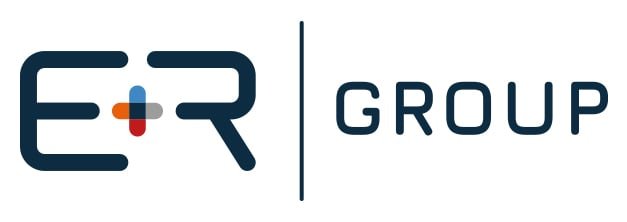In high-performance manufacturing, applying functional or protective layers to materials is often what transforms them from base substrates into advanced components. Whether it’s creating moisture barriers for packaging, conductive layers in electronics, or structural laminates in solar panels, coating and lamination are foundational processes across many industries.
To do this efficiently, manufacturers rely on highly specialised machinery. In this article we’ll explore what coating and lamination machines are, how they work, and why they’re essential for everything from R&D trials to full-scale industrial manufacturing.
Here’s what we’ll cover:
- What are coating machines
- What are lamination machines
- Key components and procedures
- From lab to full production
- Applications across industries
- Benefits of modern coating & lamination equipment
What are Coating Machines?
Coating machines are designed to apply precise layers of liquids, pastes, or films onto a moving base material, known as the substrate. This process takes place in a controlled environment, with accuracy, thickness, and coverage uniformity as key considerations.
Here are some common coating techniques:
- Slot-die coating: a pre-metered method ideal for uniform coatings across flat substrates, often used in electronics and energy devices
- Gravure coating: a roll-based system where engraved cells transfer liquid onto the substrate
- Mayer bar: a wire-wound rod spreads the coating evenly and is often used for viscous materials in low- to medium-speed applications
- Air knife: high-velocity air removes excess coating, ideal for lightweight or porous substrates
Rotary screen coating: uses a rotating screen cylinder to apply patterns or precise amounts of material, useful in textiles and printed electronics
Substrate Types
Coating machines typically work with paper, plastic films, metal foils, textiles, and composite specialty films, depending on the industry and application.
E+R’s coating systems, for example, are highly adaptable to different formulations and substrates, and are engineered for both pilot-scale and high-volume roll-to-roll operations.
What are Lamination Machines?
Lamination machines bond two or more layers together to enhance strength, barrier properties, or aesthetics. This process can use adhesives, heat, pressure, or a combination thereof to fuse materials into a single composite.
Some common lamination types:
- Adhesive lamination: a liquid or film adhesive is applied to one layer before combining it with another under pressure
- Thermal lamination: heat is used to activate adhesive properties, typically for films already coated with a heat-sensitive layer
Extrusion lamination: a molten polymer is extruded between two layers, bonding them as it cools
Example Applications
Laminated structures are found in flexible packaging, photovoltaic back sheets, medical pouches, and flexible electronics, where multi-layer compositions provide enhanced durability, chemical resistance, or optical properties.
Key Components and Processes
While specific setups vary, most coating and lamination machines share core components that work together to ensure consistency, speed, and quality.
Web Handling and Tension Control
These systems guide and maintain precise tension on the substrate roll, preventing defects like stretching, wrinkling, or misalignment. Modern systems use automated tension control and edge guiding for high-speed precision.
Coating and Laminating Stations
These stations play a central role in applying the material (or bonding layers) using the chosen technique. Interchangeable heads may be used to switch between processes like slot-die, gravure, or thermal lamination, depending on product needs.
Drying and Curing Systems
Once coated or laminated, the substrate typically passes through a drying or curing stage, which may involve:
- Air impingement dryers for solvent-based coatings
- Infrared (IR) systems for rapid surface drying
- UV curing for photo-reactive coatings or adhesives
Energy-efficient drying is a key area of innovation – an area where E+R’s systems focus on optimising both throughput and environmental performance.
Inspection and Winding
Before the finished roll is wound, integrated inspection systems check for coating defects, alignment errors, or surface contamination. Automatic winding then rewinds the treated web for collection, slitting, or downstream processing.
From Lab to Full Production
One of the advantages of modern coating and lamination machinery is scalability, which allows manufacturers to start with R&D trials and grow into full production without changing platforms entirely.
Lab-Scale Systems
Designed for material research, prototyping, and test runs, these compact units support experimentation with coating formulations, curing profiles, and new substrates. They’re ideal for proof-of-concept work.
Pilot-Scale Lines
Pilot systems help bridge the gap between lab and production, allowing for process optimisation, sample batch production, and operator training. E+R’s pilot lines, for example, offer modular design and flexibility: perfect for clients refining formulations or trialling multiple products.
Full-Scale Production
Industrial lines are built for speed, uptime, and repeatability. These systems may incorporate automation, advanced monitoring, and web widths of over a metre to meet high-volume commercial demand. Customisation is often key to adapting machinery for specific coating thicknesses, line speeds, and curing requirements.
Applications Across Industies
Coating and lamination technologies are found across nearly every modern sector where flexible materials play a role.
Flexible Packaging
Barrier films for food, pharmaceuticals, and cosmetics rely on multi-layer coatings and laminates to preserve shelf life, block moisture, and improve printability.
Renewable Energy
Photovoltaic modules, battery electrodes, and fuel cell membranes all depend on ultra-thin coatings for conductivity, protection, and efficiency. Laminated structures also play a role in structural integrity and environmental sealing.
Medical Devices
Diagnostic strips, wound care products, and sterile pouches often require coatings for biocompatibility and adhesion. Laminated medical films improve barrier properties and patient safety.
Decorative and Functional Films
Architectural, automotive, and interior design films use coatings for scratch resistance, anti-glare, or printable surfaces. Lamination enables special effects like 3D textures or metallic layers.
Security and Brand Protection
Optical films with micro-patterned coatings or laminated RFID layers help authenticate products and secure supply chains.
Ready to Learn More?
To explore our solutions and learn more about how they might fit your production goals, visit our industrial coating and lamination machinery page.
